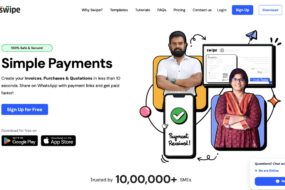In the world of information technology, one constant holds true: it takes a village to stay one step ahead of computer hackers. For this reason, web developers and IT professionals often choose to stay plugged into the greater community to keep abreast of new threats from viruses, malware, spyware and other dangerous developments.
This need creates a constant demand for user driven websites that provide a real-time interface to share information about computer viruses and similar IT threats. In this post, learn the best method for creating a user driven interface to facilitate sharing breaking news about computer viruses.
Step 1: Study your target audience.
The smartest approach is always to make a careful study of your target audience before you do anything further. You can take a variety of approaches to learn more about what your users want and like as you brainstorm how to meet their needs.
Here are some strategies that you may want to consider using:
– Polling members of your target audience. You could post surveys, questionnaires or polls on social media, in other communities you belong to or on your own IT website.
– Hosting focus groups. Whether you do this over the phone, via a webinar or in person, you can learn a great deal about how to structure the information you present on your site for fastest and most useful access.
– Demo’ing site designs. If you have a working site you are updating or revising, consider asking members of your target market to take it for a test drive and offer suggestions.
– Sponsoring a contest. If you can get a sponsor to donate a cool prize, you may be able to use a contest to generate ideas and content for your new site.
Step 2: Select your user interface (UI) design.
Because your new website has such a specific use in order to meet a very specific and time-sensitive need, it is usually best to map out what users want and what type of interface can best deliver it before launching into the more practical steps of registering your domain name, choosing your hosting provider, etc.
So your next step using this plan of attack is to decide on the best user interface to meet your target audience’s needs. As you do this, consider this list of best practices (courtesy of Usability.gov):
– Keep the navigation simple and the choices simpler.
– Be consistent throughout in every aspect of your design.
– Use color, font, style and texture strategically and sparingly.
– Structure page layout to visually appeal to your target audience.
– Be sure your content is easily read by users of all ages.
– Make breaking news up front and easily accessible.
– Consider the UI default choices with your target audience in mind.
Step 3: Register your site domain name.
After doing your basic target audience research and considering the type of user interface design you feel they will most appreciate, you will likely have sufficient information to choose and register a domain name for your new web creation project.
As you brainstorm domain names, consider other sites that function similarly to what you are envisioning (whether or not they serve the IT community). For instance, many community-focused sites use words like “hub,” “help,” “resource” or other similar terms to accurately describe their function.
The top level domain (TDL) you select should also be a reflection of the type of site you are launching. Whether you choose .com, .net., .org or something else, it can help to be aware of how each is most commonly used (for example, .org is typically selected only when the site represents the interests of a not-for-profit entity).
Once you have selected your domain name in full, you can either register it with independent entity Register.com or with your new hosting provider (here, it can be smart to check with your hosting provider first in case you get a free domain name registration as part of your hosting package).
Step 4: Sign up for web hosting.
You can be working on web creation at the same time as you are researching web hosting providers. Most web hosting providers remain fairly consistent on the basic menu of offerings (such as email services, ftp access, file storage space). But it is in the extras where one host can really stand out above the competition.
So study what each hosting provider has to offer before making your final choice. Also, if you currently have web hosting somewhere but you want to change your hosting provider, make sure you keep your current account active and paid up until the transfer to your new hosting provider is complete. This will avoid any interruption in your email or website functionality.
Step 5: Craft your site navigation.
Finally, it is time to map out your site navigation. You want to be sure to incorporate these elements:
– Easy home page access to posting news on the community boards.
– Easy home page display of breaking news about new computer viruses.
– Option to sign up for email list group to receive breaking news via email.
– Easy search and sort options so users can find the information they need quickly.
– Prominent contact information to report site bugs, posting inaccuracies or news.
– Donation button if you want to collect contributions to the community effort.
– Store page if you want to sell services or products related to the site.
– Simple, intuitive navigation to ensure users get to where they need to go asap.
By taking the time to do your user research first, you give yourself sufficient information to build your new user driven interface website on a firm foundation of actionable, current data. From here, you can make site tweaks and refinements as needed based on feedback and ideas from your user group.














